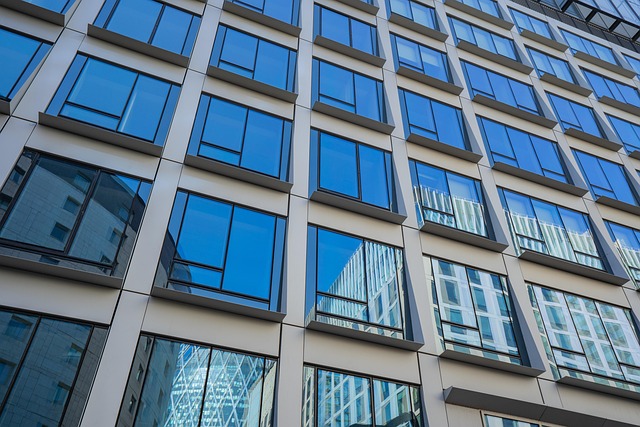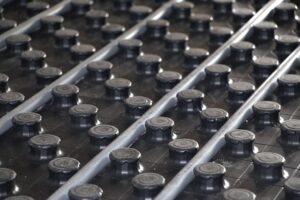Commercial air curtains are advanced entrance solutions that maintain indoor comfort by blocking drafts, pollutants, and moisture from outside. These systems, with heated or energy-efficient technologies, significantly reduce HVAC loads at points like warehouse and retail entrances, leading to substantial energy savings and improved working conditions. By creating sealed barriers, they enhance temperature control, air quality, and overall building performance in commercial spaces, making them ideal for warehouses, stores, and industrial facilities. Proven through case studies, commercial air curtains transform entrance systems while contributing to sustainability.
In today’s energy-conscious world, minimizing outdoor air infiltration in buildings is paramount for efficiency. Commercial air curtains offer a revolutionary solution, acting as an invisible barrier to seal gaps and maintain controlled indoor environments. This article delves into the effectiveness of these dynamic systems, exploring their role in preventing heat loss and gain while enhancing air quality. We’ll unpack the technology behind modern air curtains, analyze real-world case studies, and highlight key features making them a game-changer for commercial spaces.
- Understanding Commercial Air Curtains: A Simple Explanation
- The Problem of Outdoor Air Infiltration in Buildings
- How Commercial Air Curtains Act as a Solution
- Key Features and Benefits of Modern Air Curtain Technology
- Case Studies: Successful Implementations in Real-World Settings
Understanding Commercial Air Curtains: A Simple Explanation

Commercial air curtains are an innovative solution for maintaining a comfortable and controlled indoor environment while minimizing outdoor air infiltration. These advanced entrance air barriers act as a door air curtain, creating a powerful flow of air that prevents unwanted drafts, pollutants, and moisture from entering commercial spaces. By implementing heated air curtains or energy-saving technology at crucial points like warehouse entrances, retail door systems, and commercial entrances, businesses can achieve optimal climate separation.
This technology is particularly beneficial for industrial air barriers where maintaining HVAC efficiency is paramount. By blocking out cold air in winter and hot air in summer, commercial air curtains help regulate indoor temperatures, reducing the load on cooling and heating systems. This results in significant energy savings and a more comfortable working environment, making them an essential component in modern retail stores, warehouses, and other commercial settings.
The Problem of Outdoor Air Infiltration in Buildings

How Commercial Air Curtains Act as a Solution

Commercial air curtains have emerged as a powerful solution for preventing outdoor air infiltration at commercial entrances. These innovative door air curtains create an effective climate separation, keeping unwanted elements like cold air, dust, and pollutants out while allowing people to pass through effortlessly. By acting as entrance air barriers, they ensure optimal HVAC efficiency in retail door systems, warehouses, and other commercial spaces.
The energy-saving technology behind heated air curtains not only enhances comfort for occupants but also contributes to significant cost savings. Unlike traditional industrial air barriers, these modern solutions are tailored for various applications, from small business fronts to large warehouse entrances. Their ability to maintain indoor climate while minimizing outdoor influences makes them a game-changer in enhancing overall building performance and sustainability.
Key Features and Benefits of Modern Air Curtain Technology

Modern commercial air curtain technology offers a multitude of key features and benefits that enhance energy efficiency, improve indoor environmental quality, and ensure optimal climate separation. These innovative solutions act as powerful entrance air barriers, effectively blocking outdoor air infiltration at commercial entrances, including warehouse entries, retail door systems, and industrial facilities.
Among the standout advantages are their energy-saving capabilities through advanced heating and cooling technologies. Heated air curtains, for instance, prevent cold air from outside from entering during winter, while cooled air curtains keep hot air out in warmer months. This not only minimizes the load on HVAC systems but also significantly improves overall energy efficiency across various commercial spaces. Additionally, these air curtains are designed to withstand high-traffic areas, ensuring continuous performance without compromising effectiveness as door air curtains or retail entrance systems.
Case Studies: Successful Implementations in Real-World Settings

In real-world settings, commercial air curtains have proven their mettle in numerous case studies. For instance, a leading retail chain implemented heated air curtains at its warehouse entrances to achieve remarkable climate separation. This innovation not only enhanced customer comfort but also significantly reduced HVAC energy consumption by preventing outdoor air infiltration. Another success story involves an industrial complex where the installation of door air curtains led to substantial savings in energy costs and improved overall facility efficiency.
These implementations highlight the versatility and effectiveness of commercial air curtains. By acting as robust entrance air barriers, they ensure optimal indoor climate control while minimizing the need for excessive heating or cooling. Whether in retail door systems or warehouse entrances, this energy-saving technology is transforming commercial spaces, contributing to environmental sustainability, and boosting operational efficiency.
Commercial air curtains have emerged as an efficient solution to combat outdoor air infiltration, offering a seamless and effective barrier for energy-efficient buildings. By understanding their functionality and leveraging modern technology, these curtains significantly enhance indoor air quality and comfort while reducing energy costs. The successful case studies highlighted in this article demonstrate the versatility and impact of commercial air curtains, positioning them as a game-changer in the realm of building ventilation and sustainability.






